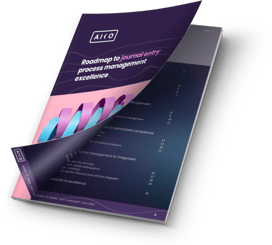One of the idiosyncrasies in the record to report (R2R) accounting is that the most important core function – journal entry management – is fraught with complex, complicated manual processes. While many accounting functions are now automated and streamlined, journal entries continue to be a productivity pain for accountants and auditors alike.
It’s worth going through the trouble of streamlining your journal entry process because there are many productivity killers, and you can overcome more of them at each stage. But that’s not all. Achieving journal entry management excellence will also make governance and compliance so much easier.
From manual work to journal entry process automation
Managing journals from your ERP system and Excel results in many repetitive manual tasks. This, in turn, makes the process prone to data entry errors. You can automate some of the most time-consuming tasks like journal creation, uploading and posting into the ERP system. Similarly, reversals, recurring journals and complex journals like provisions, allocations and accruals can be automated.
Automation is the natural first step toward streamlining the journal entry process. An automated journal creation process integrated with your ERP system can save time. For example, validating data such as company codes and cost centres to eliminate any data errors while also getting the data into the ERP faster. You can also achieve efficiency gains by automating recurring journals and journal reversals. Rather than creating a set of recurring journals requiring their own approval process each month, such a set of journals could be created once and approved once as a set and then automatically posted each month.
From task automation to process management
Although you may have automated some tasks, you probably still do not have very good process visibility. Also, solutions such as RPA make it even more important to be able to see and follow how the robots are working and coordinate the manual work before and afterwards to avoid bottlenecks and errors that take time to go back and fix. Relying too heavily on emails makes it easy to lose track of current journal status such as how many and which journals are: waiting to be posted, missing supporting evidence, approved and posted to the ERP system etc.
With process management, you’ll avoid having to deal with so many emails and manual work moving data between systems. Instead, you can customise a dashboard from which you can track whatever is important to you throughout the process. For example, everyone involved can stay on top of exactly which journals are at which stage. Look for a solution with live ERP integration so you can follow the journal entry process within different legal entities from a single dashboard.
From process management to centralised compliance
Without the capability to enforce specific rules, how will you know if they are even being followed? It can hurt your efficiency if it takes more effort than it should to verify compliance with corporate policies. This could also make it harder to prevent and detect material misstatements and fraud. But the stakes are even higher if you are
subject to stock exchange rules and regulations governing the journal entry process. Some of the key rules that are difficult to enforce without centralised compliance include segregation of duty rules, journal approval rules, supporting evidence rules, etc.
With centralised compliance, you’ll no longer have to simply hope and pray that rules are being followed. By leveraging smart algorithms and defining all rules from a live dashboard, you can to set up highly specific rules. By defining roles in your central compliance dashboard, you can enforce the segregation of duties by default. In addition, you can set different supporting evidence requirements by parameters such as legal entity, journal value and cost centre.
From isolated journal entry management to integrated financial close process
Timing is critical in the financial close process and having to switch between different applications, interfaces and windows makes the whole process take more time. Some of the factors that really add to the complexity problem are the lack of automatic linking of closing tasks and related journal entries, the inability to create a journal directly from closing tasks, the inability to journal away an incorrect reconciliation on the spot etc.
Live integration allows you to tie together disparate financial close tasks in a single connected platform. This greatly reduces complexity and saves time by decreasing the number of windows your team has to switch between. You can also initiate journal actions from within other financial close functions. For example, you can achieve major efficiency improvements in the reconciliation phase by being able to instantly journal away errors and reconcile accounts by linking them back to journals.
Roadmap to Journal Entry Process Excellence:

Use this roadmap to learn where you are in your journal management journey and how to move forward.


